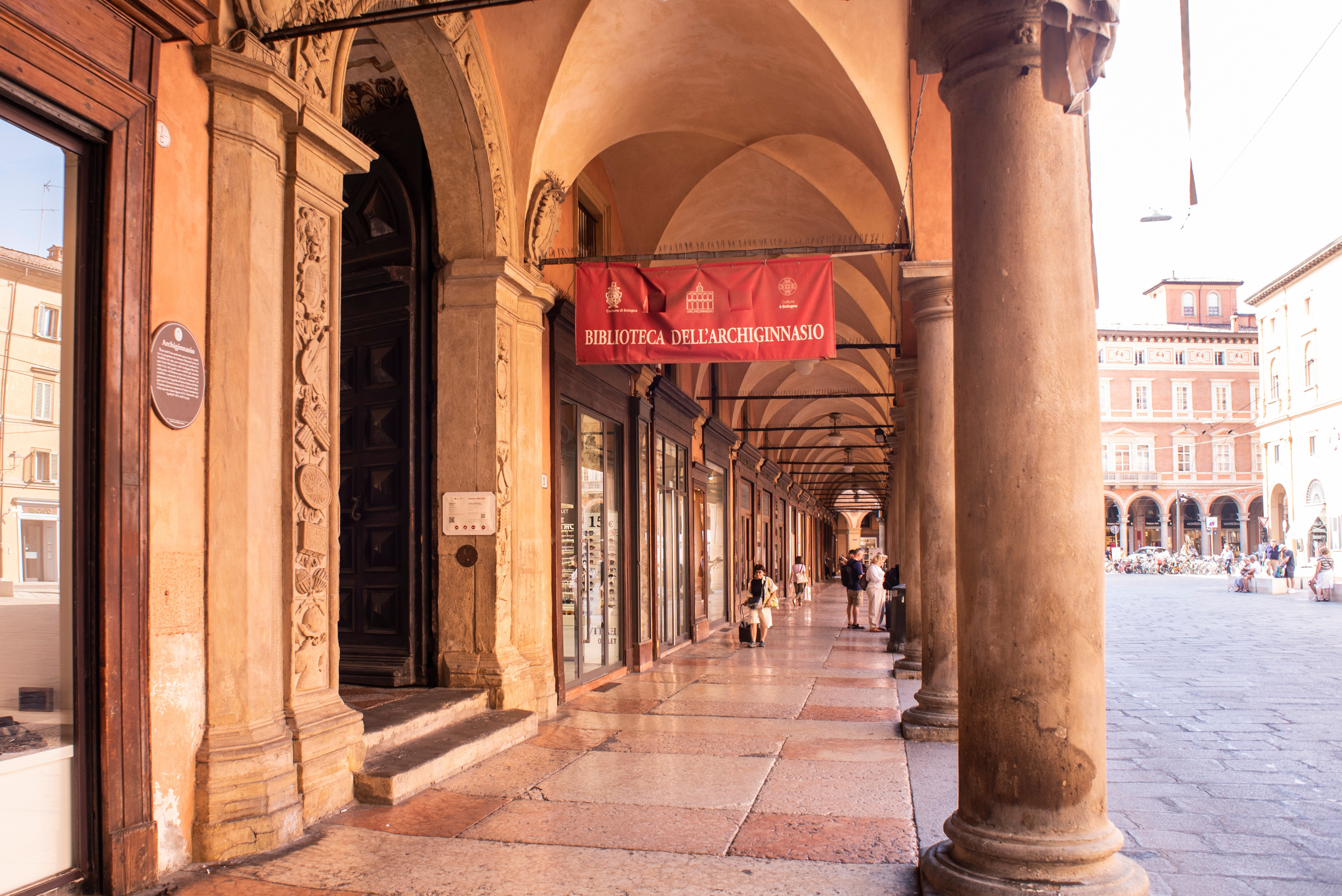In the shade of the porticoes - 5th section: Pavaglione, Banchi and Piazza Maggiore
Updated on 16 January 2025 From Bologna Welcome
The Portico of the Pavaglione is an
intersection of history, culture and urban life, where every step we take
transports us to another era.

The name Portico of the Pavaglione comes from the ancient term
"pavilion", which referred to the silk cocoon market that was held in this spot from the 16th
century onwards. Its current appearance, however, was only achieved between
1565 and 1568, when the spectacular façade of the Palazzo dei Banchi was
built to hide the nearby market
streets and to give Piazza Maggiore a
more elegant and harmonious appearance.
From an architectural point of view, in fact, the Portico of the Pavaglione is a splendid example of Bolognese classicism. Its wide, refined arches, supported by stone columns, rise above the Verona red stone floor, whose numerous fossil shells and large circular ammonites can be detected by the trained eye.

During the nineteenth century, the Portico
of the Pavaglione – stretching 139
metres to Via dell 'Archiginnasio and connecting Piazza
Maggiore to Piazza Galvani –
became an elegant shopping
portico, buzzing with a constant flow of high society members and other wealthy
figures, who frequented the latest haute-couture boutiques.
Even today, the Portico of the Pavaglione
leads to some of the most important buildings in the city, such as the Palazzo dell'Archiginnasio – the ancient seat of the University of Bologna – and the Archaeological Museum.
This portico is a lively meeting place, ideal for strolling under its wide
arches, window shopping or stopping off for a coffee, nestled in the cultural
atmosphere of the city.
"In the shade of the porticoes" is the column that explores the twelve Porticoes of Bologna, recognised as a UNESCO World Heritage Site since 2021. In addition to offering insights into their history and architecture, the column also tells of the daily life of those who work, travel and live under those porticoes every day.